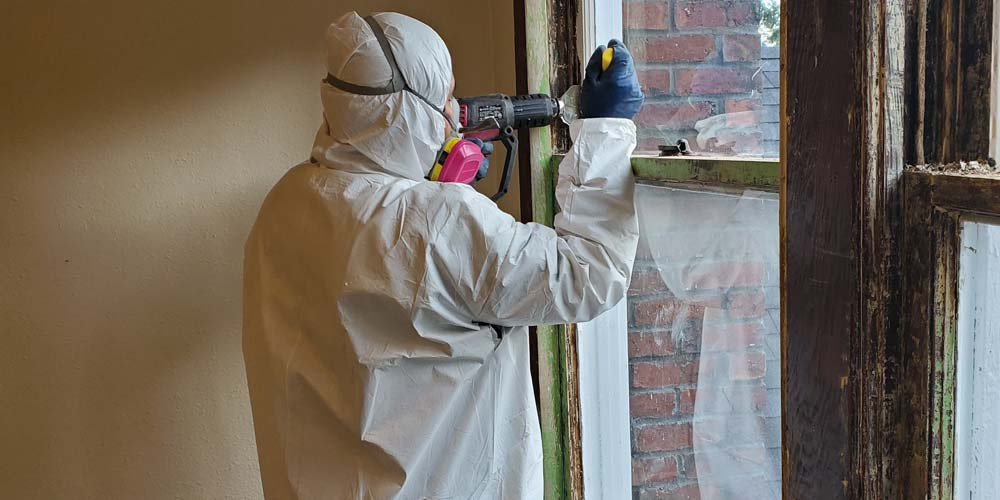Lead Removal Contractors-- Seasoned Specialists for Lead Reduction
Wiki Article
Comprehensive Overview on Effective Lead Infraction Removal Methods
In the realm of ecological safety, attending to lead offenses requires a careful and organized strategy. This extensive overview starts by highlighting the critical preliminary actions of determining lead dangers with innovative assessment and screening methods. The guide elaborates on the significance of adhering to stringent security protocols during the elimination procedure, including the use of proper PPE and separating influenced areas.Recognizing Lead Hazards
Determining lead hazards is an essential first step in minimizing the threats linked with lead direct exposure. Lead, a hazardous steel, can be present in numerous environmental mediums, including paint, soil, water, and dust.The preliminary stage in recognizing lead hazards includes recognizing common lead resources within the developed setting. Frameworks built before 1978 are specifically vulnerable due to the prevalent use lead-based paint during that duration. Furthermore, dirt contamination can take place from weakening exterior paint, commercial emissions, or historic usage of leaded fuel.
One more considerable source is lead piping and plumbing fixtures, which can seep introduce drinking water. Durable goods such as playthings, porcelains, and imported products may also include damaging lead levels. Notably, occupational atmospheres and pastimes entailing lead can track impurities right into homes.
Analysis and Screening
When resolving lead threats, efficient assessment and screening are extremely important. This crucial action guarantees the identification and metrology of lead visibility, thus guiding subsequent removal efforts. First evaluation typically entails a visual examination to determine potential lead resources, such as weakening paint or infected dirt. This is complemented by more rigorous testing methodologies to ascertain the level of contamination.
Dust wipe sampling is another important strategy, specifically in domestic settings. By accumulating samples from floorings, windowsills, and other surfaces, this technique provides insights right into potential exposure risks. Dirt testing around building perimeters is crucial to detect lead contamination that could position risks, specifically to youngsters.
Safe Removal Procedures
Upon completing detailed evaluation and testing, carrying out safe removal treatments is the following essential phase in dealing with lead risks. This process guarantees that lead-contaminated products are efficiently and securely eradicated, minimizing danger to both employees and locals. The primary step entails separating the afflicted area making use of plastic bed linen and appropriate sealing strategies to stop the spread of lead dirt.Workers have to wear suitable personal safety devices (PPE), including respirators, handwear covers, and disposable coveralls, to mitigate exposure. Employing specialized devices and wet approaches, such as damp sanding or making use of HEPA-filtered vacuums, reduces the diffusion of lead particles. It is crucial to stay clear of dry fining sand or rough blowing up, as these techniques can generate unsafe lead dust.
Garbage disposal is one more vital element; all contaminated products must be safely bagged and classified according to EPA and local laws. Additionally, thorough cleansing of the workspace with HEPA vacuums and wet cleaning guarantees the elimination of residual lead fragments.
Post-Removal Verification

Verification of effective lead elimination, recognized as post-removal confirmation, is important to make sure the security and habitability of the remediated location. This assessment makes certain that all known sources of lead have actually been resolved and that no noticeable indicators of contamination continue to be.
Adhering to the visual evaluation, ecological sampling is carried out. This entails collecting dust, dirt, and occasionally official site water examples from the remediated location. Recognized research laboratories assess these examples to measure lead degrees, guaranteeing they drop listed below the security limits established by regulative bodies such as the Epa blog here (EPA)
On top of that, air high quality screening might be done to discover air-borne lead fragments, particularly in cases where substantial lead-based paint elimination or remodelling has occurred. The outcomes of these examinations offer measurable data validating that the lead levels are within acceptable limitations.
Ultimately, post-removal verification serves as an important checkpoint, verifying the performance of the lead reduction efforts and securing the health of passengers and visitors.
Precautionary Procedures and Upkeep

A key safety net consists of making use of lead-safe certified contractors for any renovation, repair, or painting activities. These professionals are learnt methods that decrease lead dirt and debris. In addition, maintaining painted surface areas to avoid chipping or peeling off is vital, as weakening paint can launch lead particles right into the atmosphere.
Educational efforts targeting homeowner and renters concerning the dangers of lead and the significance of reporting any type of potential dangers can further improve precautionary efforts. Regular cleaning utilizing HEPA vacuum cleaners and wet mopping strategies can dramatically lower lead dirt accumulation.
Verdict
In summary, efficient lead violation removal necessitates a thorough method including extensive assessment, specific testing, and rigorous removal treatments. Continuous inspections and upkeep are vital to mitigate future lead dangers, thereby guarding public health and making certain sustained conformity with regulatory demands.Report this wiki page